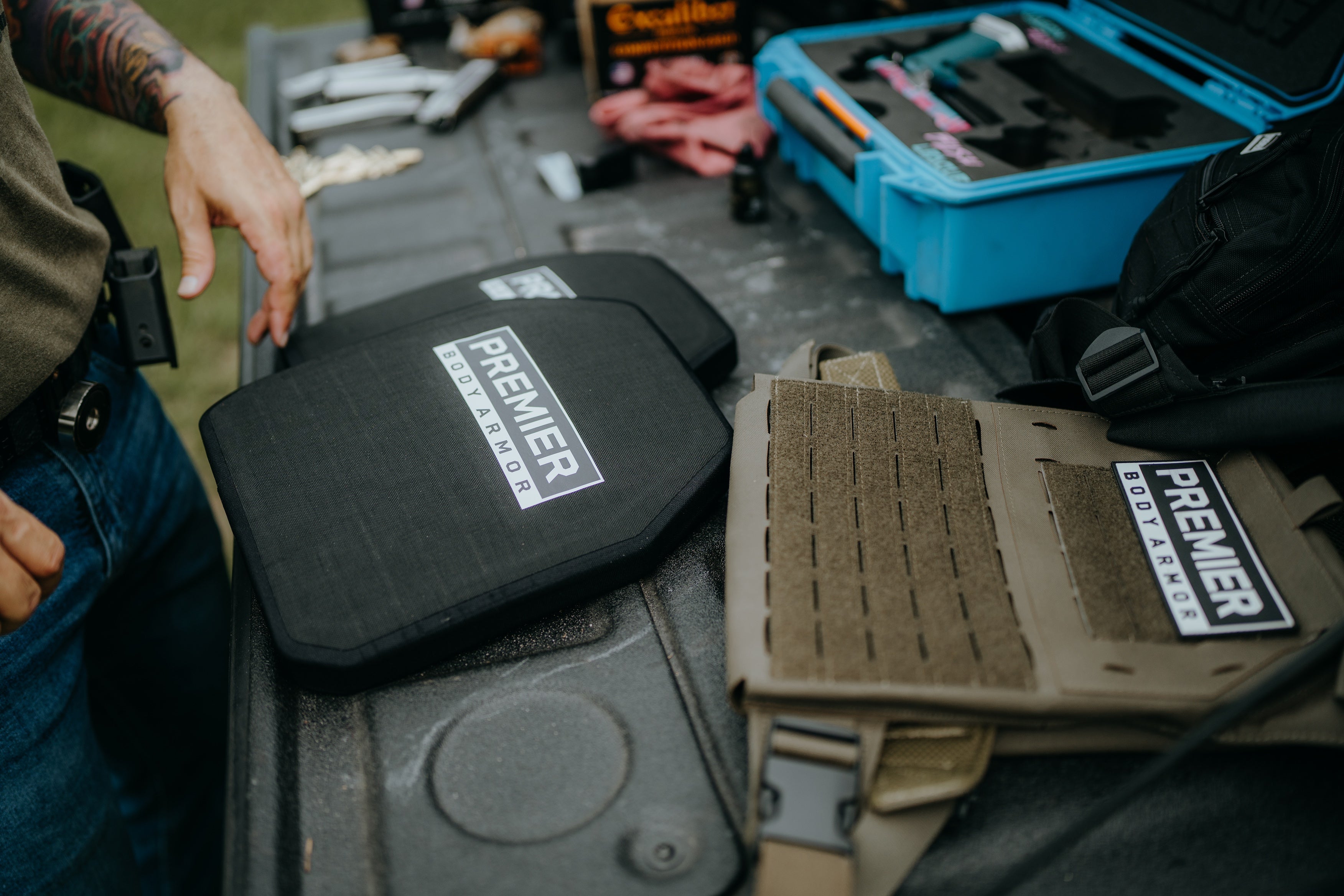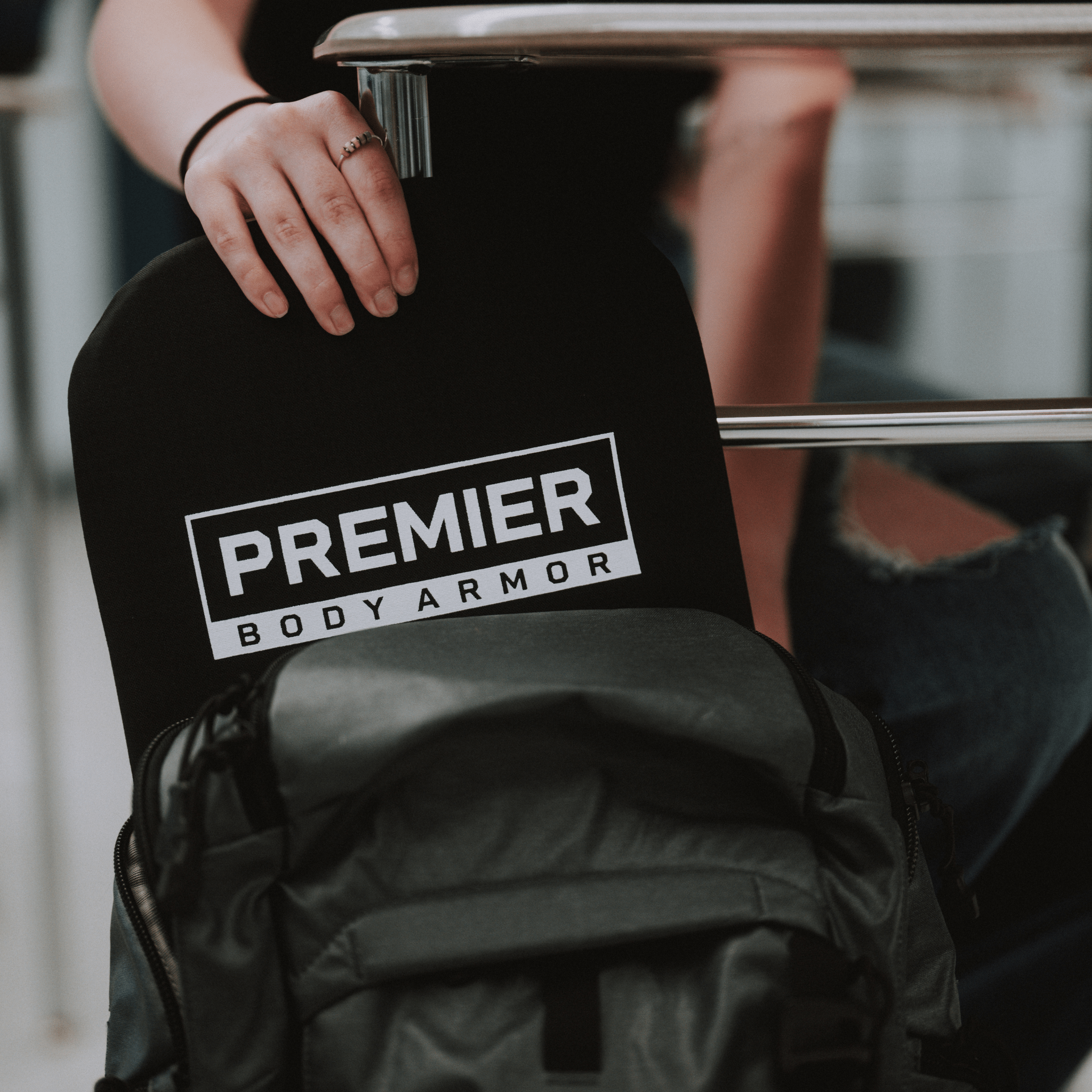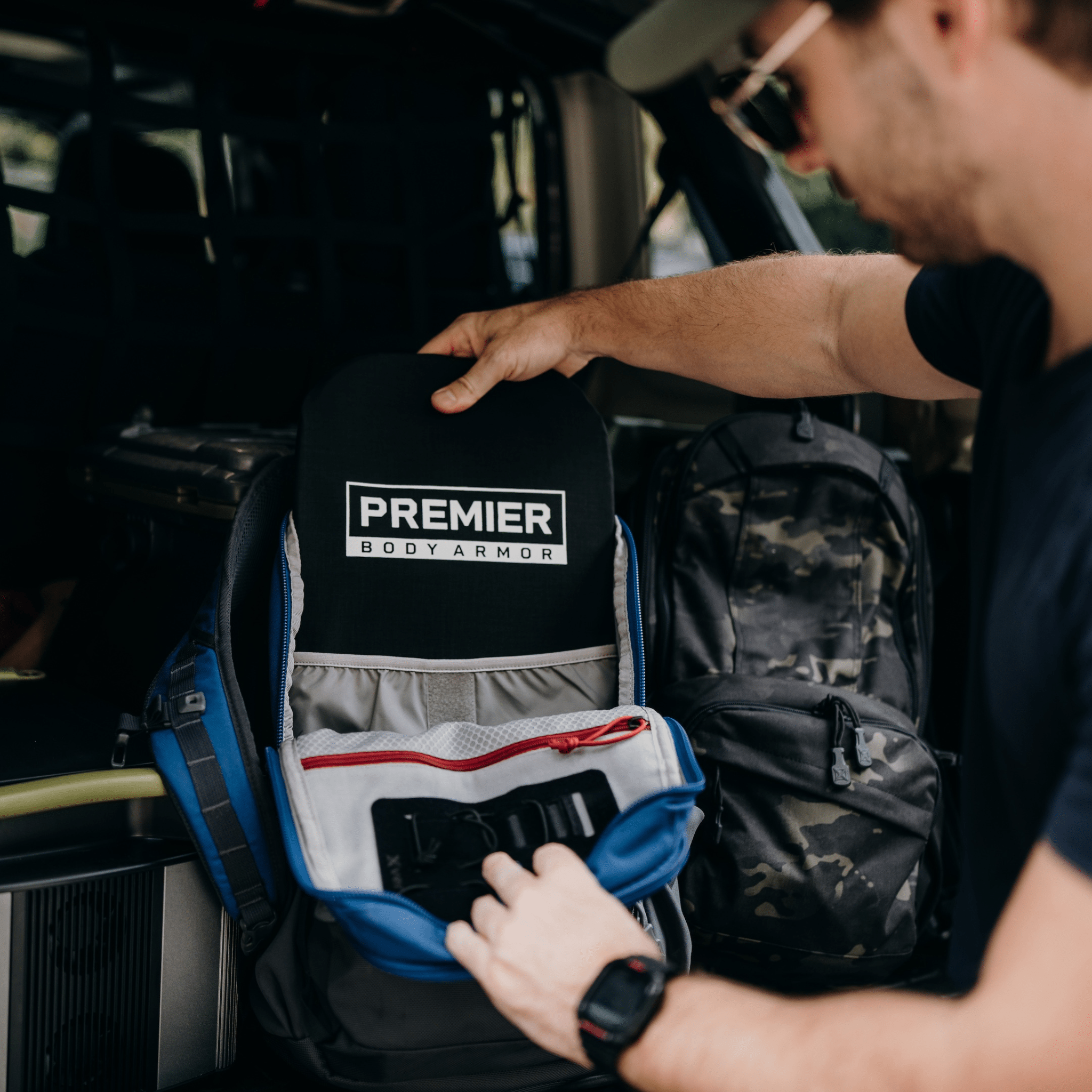DIY Helmet Camo: 5 Easy Ways to Camouflage Your Helmet
Camouflaging a helmet by yourself is possible, and it’s quite easy.
With a bit of creativity and some simple materials, you can transform your ballistic helmet into a masterpiece of stealth.
DIY camouflage isn't just for the pros; it's something you can easily do at home.
You might need to prepare for an operation, hunting trip or airsoft game, or maybe you just want to add a unique touch to your gear. Regardless of the end goal, these tips should help you get the same quality camo as if you ordered it that way.
As a side note–most of you are probably just as interested in ballistic helmets as we are. Go check out our comprehensive guide to ballistic helmets, where we break down all the ins and outs.

Ready to dive in? We’ve got five easy ways to get your helmet camouflage just right.
What is Camouflage and How Well Does It Work?
So, what is camo anyway? At its core, camouflage needs to be about blending in with your surroundings. By using colors, patterns, and materials that mimic the environment, camo helps to obscure the outline of an object or person, making them harder to spot. This technique has been used for centuries in both nature and military applications.
But does camo work? When done right, absolutely! It seems like camouflage clothing is just a trope in movies at this point. But it is still used by special forces in the military for its intended purpose, almost all the time.
How does camouflage work? It’s all about creating visual confusion. By breaking up shapes and outlines with contrasting colors and irregular patterns, camo tricks the eye into seeing nothing out of the ordinary. For a good example of different camouflage styles, check out this page from the Department of Homeland Security showing camouflage uniform patterns.
The Most Popular Types of Tactical Camouflage for Your Ballistic Helmet
Choosing the best camo pattern for your helmet can make a big difference in how well you blend into your environment. There are several types that may be considered the best military camo. Some are more popular among tactical gear enthusiasts.
The best camouflage pattern can only be up to you. Pick the right type of camouflage for your needs.
One classic option is tiger stripe camouflage, known for its use during the Vietnam War. This pattern is great for dense jungles and forests.
Another popular choice is the operational camouflage pattern (OCP), which is versatile and used widely in military uniforms today. For more detailed information on the types of body armor used by the military, check out our article: What Body Armor Does the Military Use?
For desert environments, desert camouflage patterns are ideal, helping you blend into sandy and rocky terrains.
Woodland camouflage is perfect for forested areas, with a mix of greens and browns that mimic the natural foliage.
If you’re operating in temperate or varied environments, flecktarn camouflage offers a unique and effective pattern.
Each of these patterns has its strengths, so think about where you’ll be using your helmet most often.
Understand your options first before making any decisions. You want to choose the best camo for your ballistic helmet.
Tiger Stripe Camouflage for Tactical Helmets
Tiger stripe camouflage is a classic color scheme that gained fame during the Vietnam War.

This Vietnam tiger stripe camouflage is perfect for dense jungles and forested areas, offering excellent concealment with its bold, irregular stripes that mimic natural vegetation.
Camouflage Your Helmet with Operational Camouflage Pattern (OCP)
The OCP camo, or operational camouflage pattern, is a versatile choice used by the U.S. military. It’s a classic pattern.

This OCP camouflage pattern can blend into a super wide variety of environments It is likely the most recognizable camouflage pattern today.
Desert Camouflage for Camouflaging Your Helmet
Desert camouflage is ideal for arid environments. The army desert camouflage pattern has shades of tan and brown, which are best for sandy and rocky terrains. For desert landscapes, this is basically your only option.

Woodland Camouflage for Ballistic Helmets
Woodland camouflage is perfect for forested areas, featuring a mix of greens, browns, and blacks.

These colors in woodland camouflage help mimic natural foliage, providing excellent concealment in densely vegetated environments.
Obscure Your Tactical Helmet with Flecktarn Camouflage
Flecktarn camouflage is a unique pattern ideal for temperate environments. The flecktarn camouflage pattern uses a mix of green, brown, and black spots to create an effective, disruptive concealment.

DIY Camo Methods – Five Ways to Add Effective Camouflage to Your Tactical Helmet
Now that we've explored the best camouflage patterns, it's time to get hands-on with some DIY camo techniques. It doesn’t matter if you're a seasoned DIY enthusiast or a beginner wanting to save money and/or personalize your gear, these methods will help you achieve the perfect DIY camo patterns for your tactical helmet.
That being said, there are a variety of ways to camouflage your helmet, and you’ll want to look at all of them.
Two of these methods involve paint. You can hand paint intricate designs or use spray paint if you want it to be quick and easy. There is camouflage netting, which offers a versatile solution, or camo helmet covers, which provide an easy and removable option. For those who love a challenge, hydro dipping can give your helmet a professional and durable finish.
You should experiment, too. You want a helmet that helps you blend into your environment, but you also want it to reflect your personal style.
Ready to get creative? Let's get more into the specifics of each method.
Hand Paint Camo Patterns onto Your Helmet
Hand-painting your own camo patterns is probably the most rewarding way to customize your helmet. If you’re wondering how to paint camo without completely ruining your helmet, don’t worry–it’s simpler than it sounds.
Start by gathering your supplies: acrylic paints, brushes, and if you want, get some DIY camo stencils as well. These are vinyl stencils available in different camo patterns. You can also make your own using cardboard or plastic sheets. Some people skip this to go by their artistic intuition alone.
Before you paint, clean your helmet really well. If you don’t, the paint will fall off very quickly and this will be a huge waste of time.
Apply a base coat in a neutral color that matches your chosen environment. Try to pick the lightest color so that it’s easy to paint over.
Let the first coat dry, then place your stencils on the helmet and start painting the camo pattern.
Use the right mix of greens, browns, and blacks for woodland camo, or tans and browns for desert camo. Be sure to let each layer dry before moving on to the next color to avoid smudging. You should always use a photo as reference, or you’ll be much further off than you think.
Hand painting gives you a design that is more complex and unique. It’s a nice way to spend part of your afternoon productively. Know that you will probably mess up at the beginning.
A couple minutes of practice is all you’re going to need to get comfortable with it. The finished product will come out looking fine as long as you follow each step.
Use Spray Paint to Create Convincing Ballistic Helmet Camouflage
If you want the quick and effective way to paint your helmet camouflage, DIY camouflage painting with spray paint is a fantastic option. Using DIY camouflage spray paint allows you to cover large areas quickly and achieve a professional-looking finish with minimal effort.
Start by choosing high-quality spray paints in the colors that match your desired camo pattern. For a woodland look, select greens, browns, and blacks. For desert environments, go with tans and browns.
Look at some examples of spray painted helmets online and see what you like. Then go outside and find a surface that can be painted on, like cardboard. This likely needs to cover more area than you think it does, so find something that will give you some room to spare.
Before you set a finger on a can of spray paint, clean your helmet. You have to get rid of any trace of dirt and oil–they will do a great job making the paint fall off.
Once you’ve cleaned, you’re ready to paint. Start with a base coat that covers the entire helmet. You want to use a lighter color for this first one. Wait until it’s dry, and then move onto the next layer.
The next layers can be as simple or complicated as you want. To make it more interesting, use leaves, twigs, or pre-made stencils to create your camo pattern. All you need to do is hold the stencil or natural object against the helmet and spray over it with a contrasting color. Repeat this process as much as you want with different colors, allowing each layer to dry before applying the next.
If something goes wrong, you can easily touch up any spots or add more detail as needed. We recommend adding a clear coat layer when you’re done. This will give you a durable finish that will last longer.
Camouflage Netting Provides Fast & Easy Helmet Camo
For a quick and hassle-free camouflage solution, DIY camouflage netting is a nice go-to. Camo nets are cheap, versatile, and can be draped over your helmet quickly. This method is particularly useful if you need to adapt to different environments quickly.
To use camouflage netting, simply cut a piece of the netting to fit over your helmet. Attach it securely using colored ties, elastic bands, or by tucking it under the helmet straps. The netting can be layered to add depth and improve concealment. You can also weave in natural elements like leaves and twigs to enhance the camouflage effect.
One of the major advantages of using camo nets is that they aren’t limited to the helmet alone. They are often used as a face veil, or to conceal other equipment. It’s also lightweight, and you can purchase a ton at a time.
Choose a Camo Helmet Cover for the Fastest Camouflage Method
If you want the most professional solution, you can get a helmet cover.
These covers come in various patterns such as urban camo helmet cover, tiger stripe camo helmet cover, woodland camo helmet cover, and desert camo helmet cover, as well as any other widely used pattern.
A helmet cover is essentially a fabric cover that fits snugly over your helmet, instantly changing its appearance. You slip it on, adjust it for a secure fit, and you're ready to go. The point of these is so that you don’t need to buy different helmets for different environments.
These covers are very durable and geared towards training exercises and real-world missions.
One of the biggest advantages of helmet covers is their versatility. You can switch between different patterns quickly, depending on your operational needs. This flexibility makes them an excellent choice for anyone who needs to adapt to multiple environments without carrying multiple helmets.
In addition to providing camouflage, helmet covers can also protect your helmet from scratches and minor impacts, extending its lifespan. If you need a fast, reliable, and adaptable solution, a camo helmet cover is your best bet.
You can make these helmets in various ways and set up a velcro system to switch them out.
Here’s what you need to do: Find a helmet cover you like. Figure out what fabric they use, and get your hands on some. Some materials will hide you from things like infrared detection, so it’s important to consider the threats you are likely going to face. Once you have the right fabric, it’s usually quite easy to replicate, and there are specific tutorials all over the web for whichever helmet cover you need to make.
Hydro Dipping – A Challenging DIY Camo Method for Your Ballistic Helmet
For those who love a good challenge and want a professional-grade finish, camo hydro dipping is the way to go.
Using a camo hydro dip kit, you can apply a seamless and intricate camouflage pattern to your helmet that’s both durable and visually stunning.
Most of you have probably seen hydro dipping videos on social media at some point. Manufacturers will take a special film with the camo pattern and float it over a tub of water. The helmet is then carefully dipped into the water, causing the pattern to stick to its surface.
This technique allows for incredibly detailed and uniform coverage that’s much harder to achieve with traditional painting methods. It’s a bit difficult to learn, but you don’t have to become Pablo Picasso or spend hours on painting once you learn it.
Here’s what you do: First, make sure you have all the necessary supplies. You’ll need a camo hydro dip kit, a container large enough to submerge your helmet, and the camo hydro dip film of your choice.
Clean your helmet thoroughly and apply a base coat that complements the camo pattern you’ve selected.
Once you’ve got everything set up, you’re probably not quite ready yet. It would be a very good idea to practice on something helmet shaped first. The hydro dip film is much cheaper than your helmet, so you want to make sure you are fully ready before you dip your actual helmet. If you can get this right, you’ll end up with a very professional looking helmet.
Here’s the deal: It’s super tempting to order a helmet cover and simply forget about it. But you have to remember–these are the things we live for. A nice Sunday afternoon project should be something to look forward to.
We hope this article has given you plenty of ideas to get you thinking. With a bit of creativity, it’s easy to have a camo helmet that stands out for all the right reasons.
At Premier Body Armor, we’re passionate about all things tactical. While we specialize in top-quality bulletproof vests, our love for tactical gear drives us to share our knowledge and help you gear up effectively.
If you’d like to learn more about military gear and protective equipment, take a look at our body armor blog to figure out what the current must-know topics and trends are in this field. Next, ensure that you stay informed. Join our email list and we’ll keep you up to date.
Written by Ben Bryner










Leave a comment